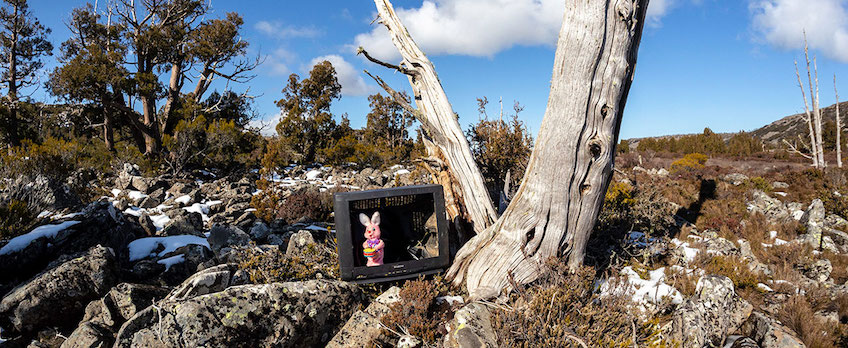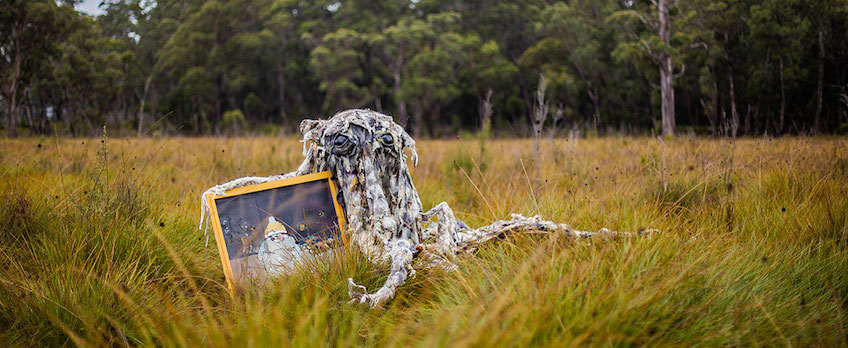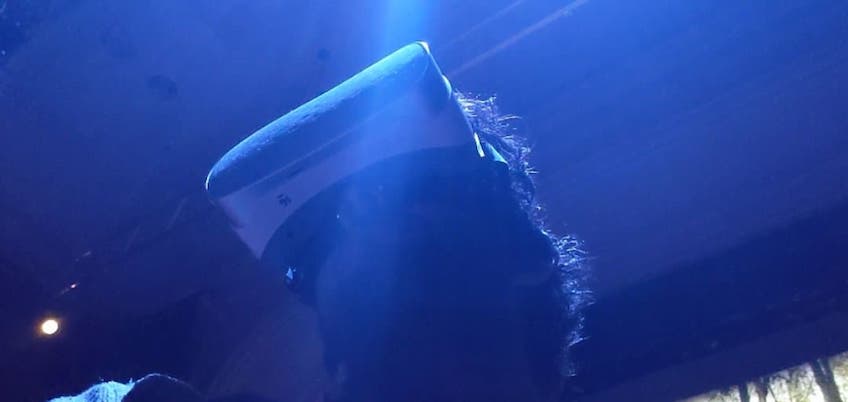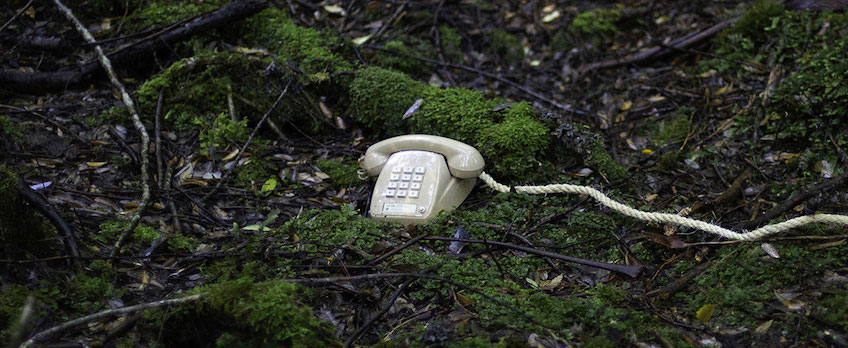Interested in writing for our blog? Send your pitches to editor@miff.com.au.
Waiting for The Waiting Room: Rolf de Heer on the Future of VR

It’s clear that Rolf de Heer is a realist about virtual reality. For the witty and intellectually generous filmmaker behind The Tracker (MIFF 2002), Ten Canoes (MIFF 2015), and Charlie’s Country (MIFF 2015), serving as the producer on The Waiting Room – the creative vision of documentarian and Another Country (MIFF 2015) director Molly Reynolds – represents his first foray into VR. But as De Heer stresses during our conversation, the VR headset is as much an exciting opportunity for new kinds of experiences as it is an obstacle to engagement. Virtual reality, he insists, has a long way to go.

From The Waiting Room
My own experience of The Waiting Room bore this out. A week earlier, I’d been invited to sit in a swivel chair inside a dark room at SpACE@Collins. There was an air of excitement. With our headsets fitted, we were instructed to turn our eyes to the floating title text: “The Waiting Room”. Suddenly, breaking the illusion, an attendee cried out: “Mine just says “FACE THE OTHER WAY?”” The integrity of the virtual world was corrupted.
Of course, this is not a problem with the content of the work but with the clunkiness of the technology. The frustrations of the headset, de Heer explains, was the reason that The Waiting Room had been presented as an installation at the 2018 Adelaide Film Festival .
“The presentation was different; the piece is the same,” he tells me. “[It] was VR without the headset, which is what we set out to do. We wanted to overcome the headset’s limitations, which are that you can’t see faces clearly, you can’t see distant detail clearly and it’s an individual experience – not a social one. We went for this thing that we’ve still not found anywhere, which was The Waiting Room projected in a space in the gallery: onto the walls, onto the floor with a soundtrack also from outside.”
At MIFF however, a compromise was sought. While the images were still filtered through the goggles, the immersive three-dimensional sound produced by a speaker set up at SpACE@Collins offered a much richer audio experience than anywhere else. De Heer was chuffed with the solution: “I found it very good; it was very different to the Adelaide experience. We had much more detailed sound in Melbourne.”

Author's photo of The Waiting Room experience
Back in the dark room, we began our deep dive into the awe and wonder of Reynolds and de Heer’s world. A series of what de Heer calls “pristine environments” opened up around us in full 360-degree view and indeed, stirring atmospheric audio came at us from every direction. The sole recurring element of the seven and half minute work is an alien creature called Osca performing human activities, like looking through a telescope in the background. I was hooked, but this didn’t resolve the pain I was beginning to feel in the bridge of my nose, nor the way the images seemed distant and a little out of focus.
This strange disconnect between infinite perspectival potential – to see an untouched earth through alien eyes – and the functional and physical limitations of the medium of VR clearly weighs on the mind of de Heer.
“The opportunity existed to explore a new frontier that springs from cinema and see what that does,” he says, when I asked him why this piece was a VR work and not a film “And what you need to do and so on. And have it reflected back into my own work. It allowed me to engage with VR in a way I never otherwise would have engaged.”
While the work was meticulously planned, de Heer was particularly interested in the way VR removes an element of control from the artist. “The whole thing about The Waiting Room was that it allows the audience to explore,” he says, “whereas with narrative fiction you’re forced to lead the audience – and so they’re two different aspects of VR and I’ve been deeply involved in one. It was very interesting.”
VR seems, for all involved, always just beyond control and comprehension. The technology is equal parts remarkable and frustrating, but this just might be the source of its power and potential. There’s something to be said for the need to maintain the threshold we instinctively use to distinguish ourselves from the technology we build.
De Heer sees the potential of VR to shape understanding, and offer a kind of technological re-embodiment of experience. Through VR, we can witness and interact with something we have no ability to see with our naked eyes: a world – our world – rendered through and by technology. Maybe de Heer and Reynolds aren’t waiting for this medium to be indistinguishable from human perspective before they start making these works – the thought experiment, the adjacency to reality is enough.

From The Waiting Room
The alien perspective is alien, in part because it is technological. Perhaps if the technology was perfect, seeing an Australian environment untouched by colonialism, ecological devastation or capitalism would weaken an imperative for empathy, for longing, for anger. Instead something just beyond our reach, uncomfortably situated behind a layer of barely translucent digital cheesecloth, reminds us of the need to act, to remove the virtual from virtual reality.
After all, de Heer still believes that truly good narrative fiction can achieve the technological dream of perfect VR: “There seems to be some lacking capacity to put enough pixels into a headset. It’s not remotely close enough yet to get a sense of a reality – in fact you get much closer to that reality with a very good piece of cinema.”
But the dream of perfect VR remains on the horizon. “I can understand, once it gets there what that capacity could be,” he reflects. “It could more fully and deeply be a starting point, for all those political discussions, than anything I’ve come across.”